Southeast Asia consists of several countries with varying levels of development. In this region alone, transport and infrastructure can be worlds apart. Getting around places can be quite a challenge especially when we are all used to functional transport options back home. When considering things like timing and convenience, flying is no doubt the best way to get around. However, the real adventure comes when you try to tackle the various modes of surface transport in different Southeast Asian countries. It can be really tricky, but it definitely provides some eye-opening perspectives of our region that you never know about.
Here are some things to take note that will help you conquer your exploration around SEA via road, rail and boat!
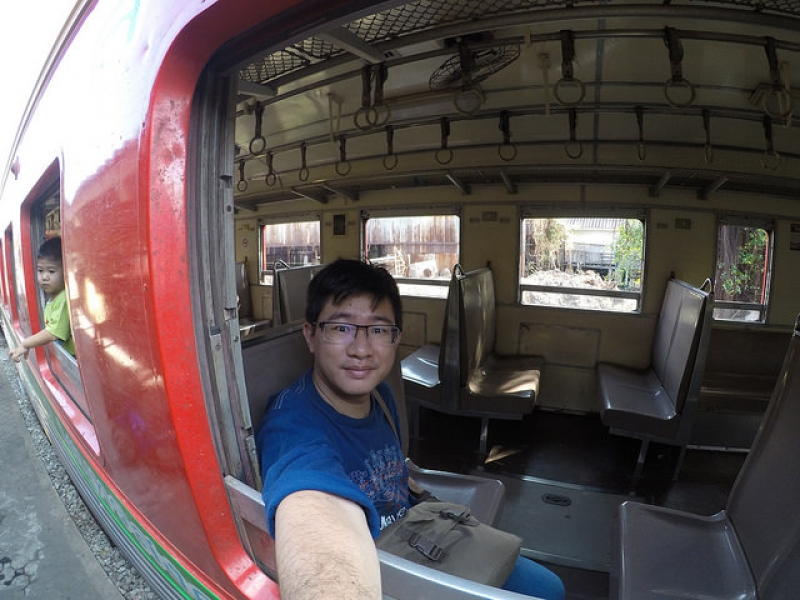
Travelling on a local train in Thailand, with a random kid sitting behind me.
Transport can be very slow and unpleasant
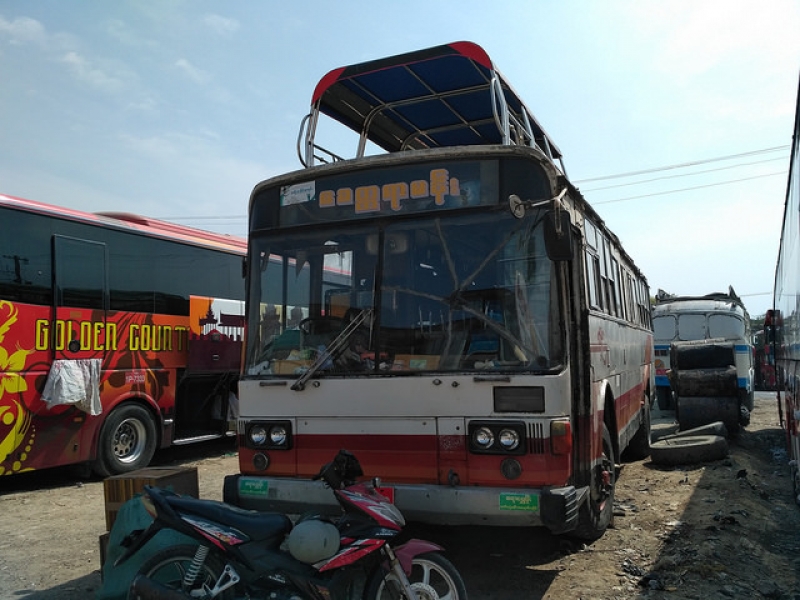
Fancy squeezing on the “upper deck” of this ancient-looking bus in Myanmar? That’s how locals travel!
Surface journeys in Southeast Asia can be excruciatingly slow, unpredictable and even involve safety concerns especially where infrastructure is less developed. Nausea-inducing bus journeys that can stretch over 30 hours are not unheard of. Besides having to endure endless bumpy roads, travellers may even have to share their space with cargos such as live chicken!
Take safety and comfort into consideration
It is therefore recommended to take safety and comfort into consideration when you travel. Consult maps and directories that can help you find out the possible routes from A to B. Which are the main highways? Are they mostly straight? Or do they go through tough, mountainous terrain? If it’s the latter, your journey’s probably going to take forever on a bus (with a higher chance of accidents on poorly-maintained roads). In less-developed regions where safety regulations are lax, you may be squashed like “sardines” together with other “ingredients” (i.e. both living and non-living cargos). This of course, effectively overloads the bus and further increases the risk of getting into accidents.
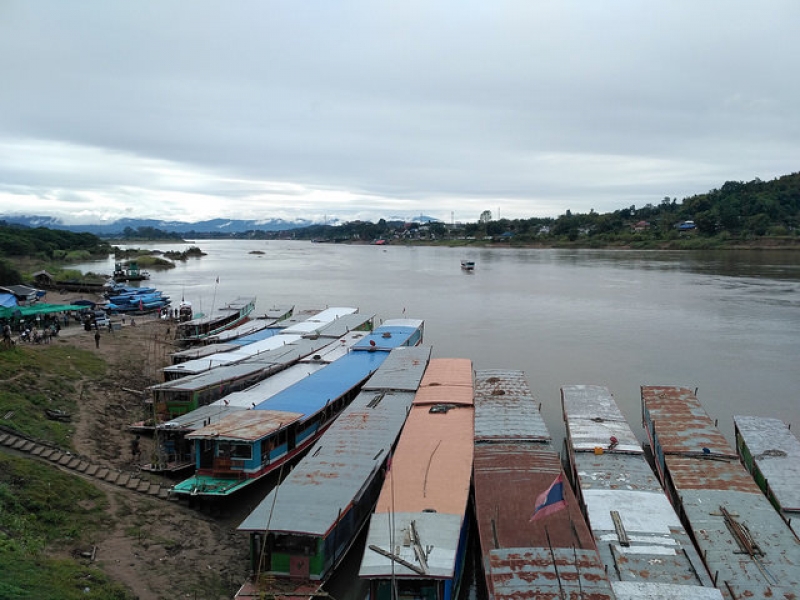
A fleet of slow boats at Huay Xai, Laos. Travelling by waterways is an option worth considering over long, uncomfortable journeys on roads of poor conditions.
If a route by a certain mode of transport seems precarious, you can consider a different route to your destination such as via the railway or even on a boat. Statistically speaking, rail travel is best in terms of safety. Travelling by boat can be the slowest, but it does give you a sense of safety while cruising the waterway at leisure speed.
When travelling by bus
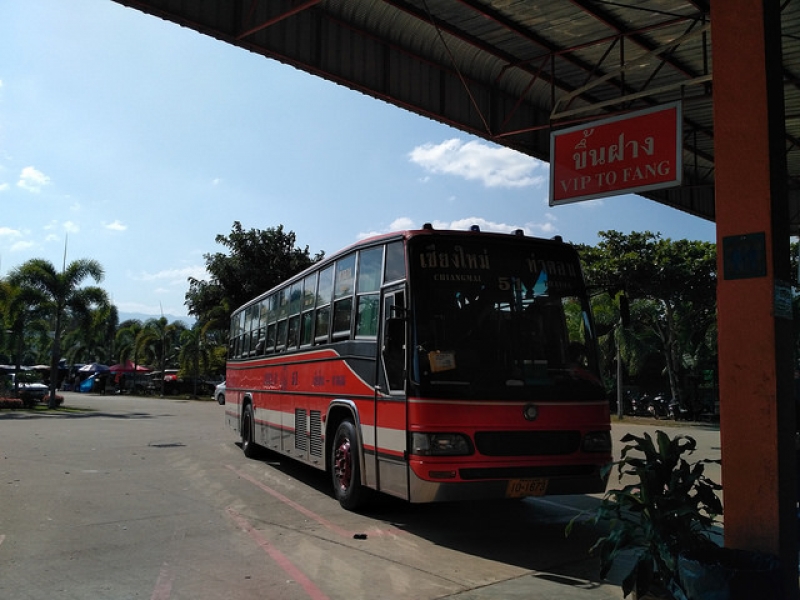
Local provincial bus in Northern Thailand. Not too shabby, at least for me.
If the bus is travelling on an easy route via expressways or main roads through easy terrain, it shouldn’t be an issue for most travellers. For optimum comfort, take the VIP buses that have wide, comfortable seats in a two by one setting. I recommend this for journeys that take more than 6 hours. Normal air-conditioned tour buses with a two by two seat setting aren’t too bad either, if you’re willing to squeeze a little bit with still-reasonable comfort. Conditions for local public buses, on the other hand, can vary, and it’s usually more cramped. For more seasoned travellers like myself, a journey on such buses should be no big deal, as long as you manage your expectations.
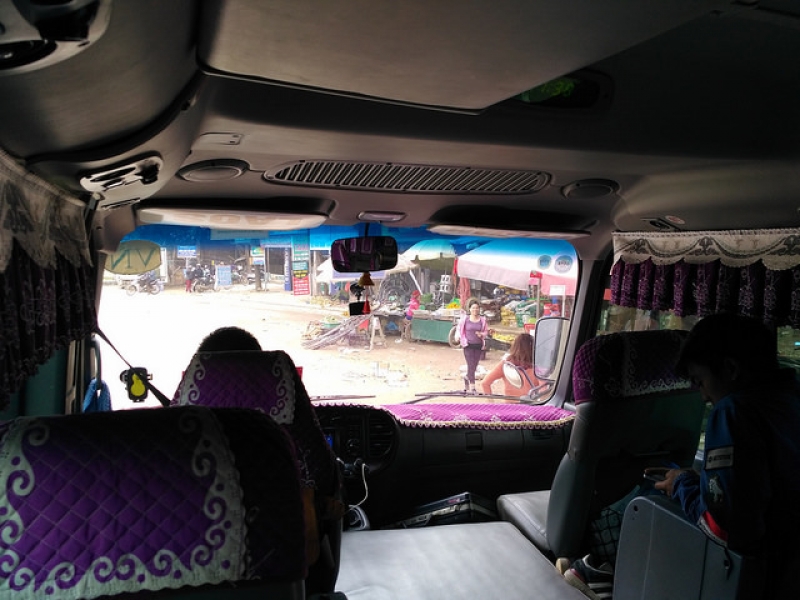
A very bumpy bus trip from Laos to Vietnam. Luckily it was only four hours.
If you have to travel long distance via less developed regions or on winding routes in the mountains, it is advisable to do it as a series of shorter journeys (with each journey being five hours or less), during good weather and in daytime. You’ll then have time to rest in between journeys and perhaps discover some interesting attractions at your pit stops along the way. You’ll feel safer when travelling during the day as you’ll be aware of the surrounding environment and know roughly where you are heading towards.
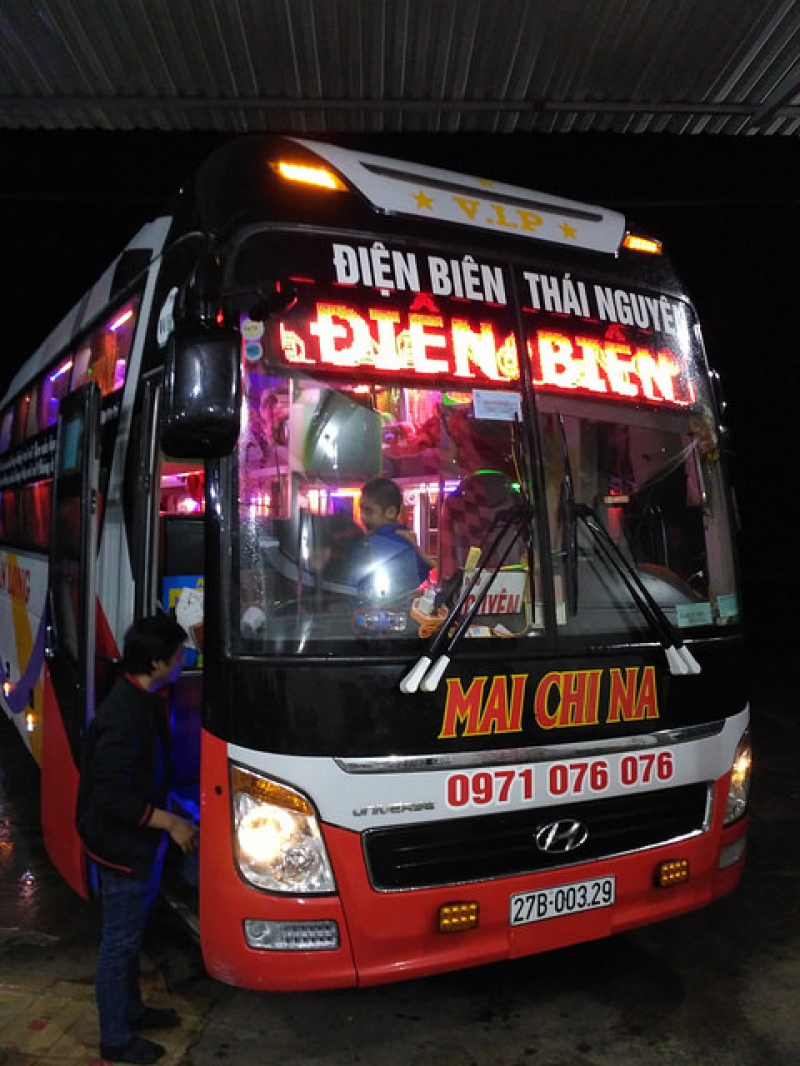
The notorious sleeper bus in Vietnam driven by speed demons. It’s essentially an overnight roller coaster, safety not guaranteed. Take this at your own risk.
Avoid night travel if you’re easily freaked out by speeding buses and abrupt braking on wet, narrow winding roads in pitch darkness. I experienced exactly that when I once boarded a sleeper bus in Vietnam from somewhere near the Laos border to Hanoi. I stayed awake constantly fearing for my life and I arrived in the capital grumpy and sleep-deprived. Needless to say, it was one of the worst journeys in my life, ever.
Ensure that you don’t drink or eat anything that will make you constantly answer the call of nature during long bus trips. On that same journey, I had to beg the bus driver to stop in the middle of nowhere and I ended up peeing into what I thought was somebody’s rice field in pitch darkness.
Of course, it’s entirely up to you to decide whether to make the long bus journey, especially when you don’t have much of a choice in certain areas or in terms of budget. No matter what kind of bus journey you take, I’m sure at least one of them would be memorable in a way that would give you the feeling of having an “achievement unlocked”.
When travelling by rail
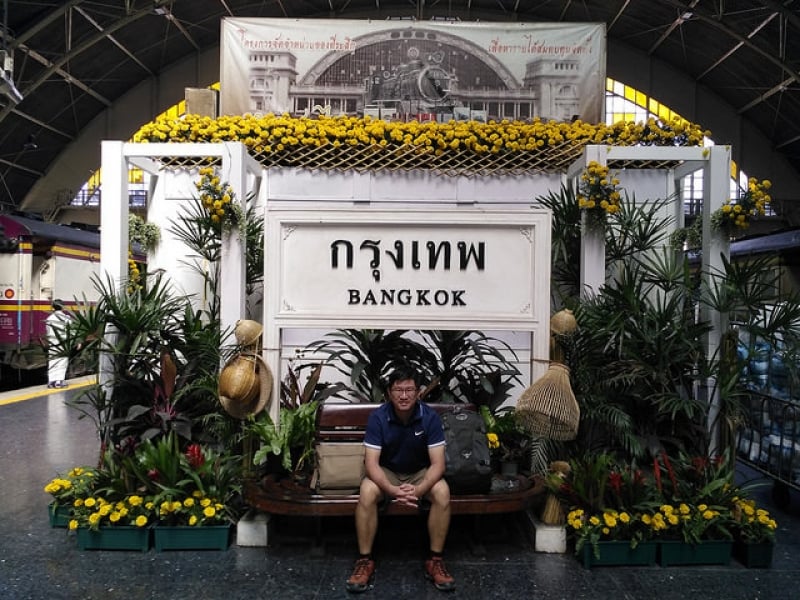
Arrived at Bangkok Hualamphong station in high spirits, because I slept very well from Padang Besar (Malaysia) on a sleeper train!
Rail travel definitely trumps other modes of surface transport in terms of safety. With speeds reaching up to 140km/h, the KTM ETS trains in Malaysia are currently the fastest in the region. Rail travel can be rather slow in other parts of Southeast Asia, but if you know how to time your journeys, you could actually save a night of accommodation by taking a comfortable sleeper train overnight.
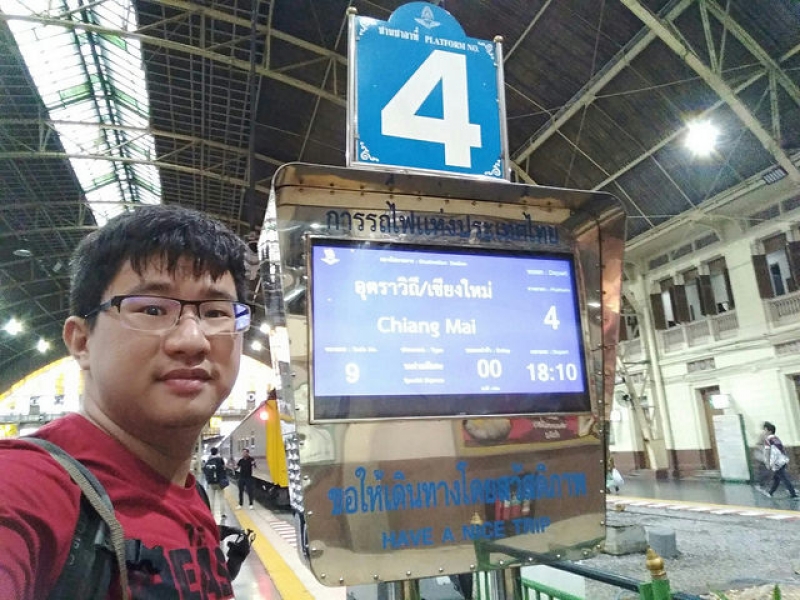
Going on board my one-night accommodation, Train No. 9 from Bangkok to Chiang Mai.
Websites like seat61.com give you lots of insightful information and reviews on most rail travels in each and every country. Check out the rail maps and study the timetables for good train timings, as well as the type of train classes that are available for the routes you intend to take. In most parts of Southeast Asia, you should be able to get a ticket on the day of travel itself. However, for popular journeys such as on the sleeper train from Bangkok to Chiang Mai, it is recommended to book the tickets a few days in advance.
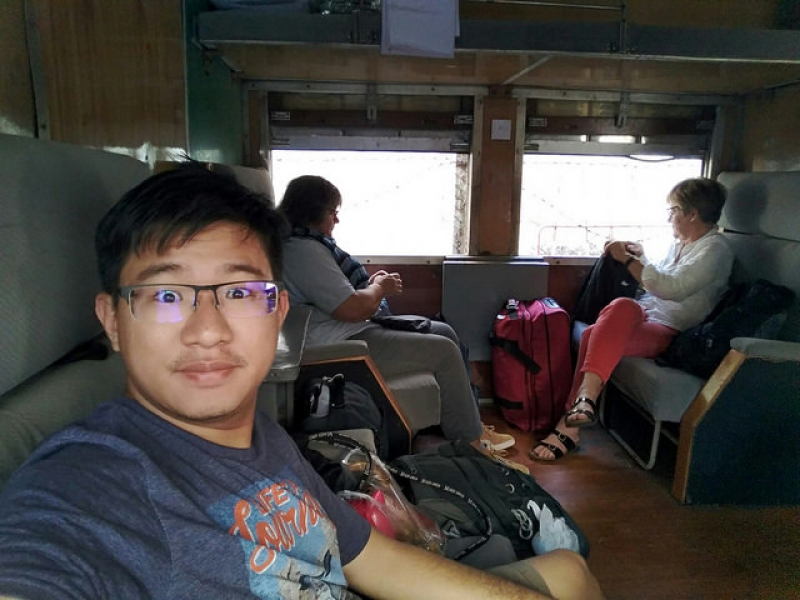
Beginning of a rather eventful train journey from Yangon to Bagan.
That being said, comfort varies widely depending on which country you take the train, as well as the classes available. I once booked a crawling 19-hour sleeper train journey from Yangon to Bagan, thinking it would be quite comfortable with a berth for me to lie down and fall asleep easily. It turned out to be an extremely bumpy and noisy ride that was exposed to the elements such as sand, smoke and stench from dumping grounds right beside the tracks. Furthermore, the carriage was not insulated against the cold night temperature. I shivered throughout the night under a very thin blanket that was barely enough to cover my whole body.
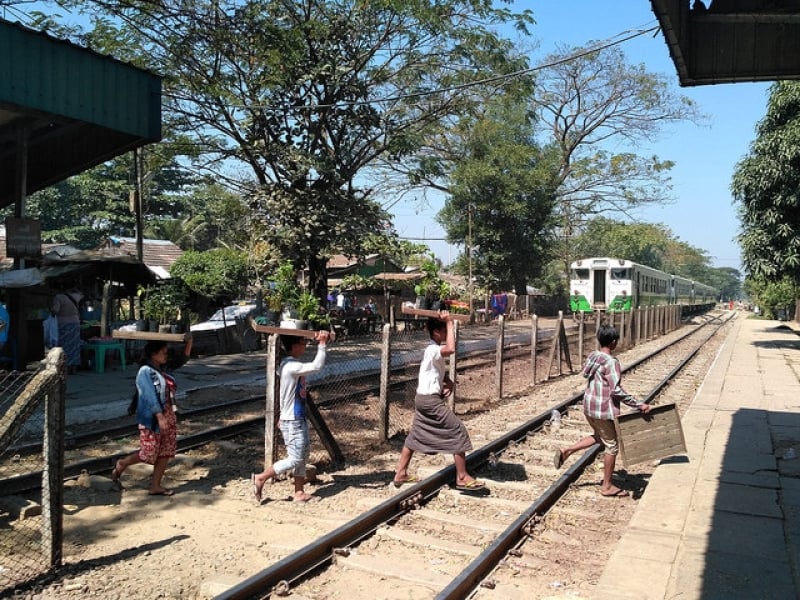
Life along the railways of Myanmar.
Nevertheless, travelling by train is one of the more authentic methods to experience the way of life in the country. You’ll find yourself immersed in a truly local environment where young children would enthusiastically wave at you by the tracks, and where vendors would get on the train to sell you a variety of small bites just to earn their simple, honest living. So embrace this opportunity and enjoy the many pleasant little moments during your epic rail trip!
When travelling by boat
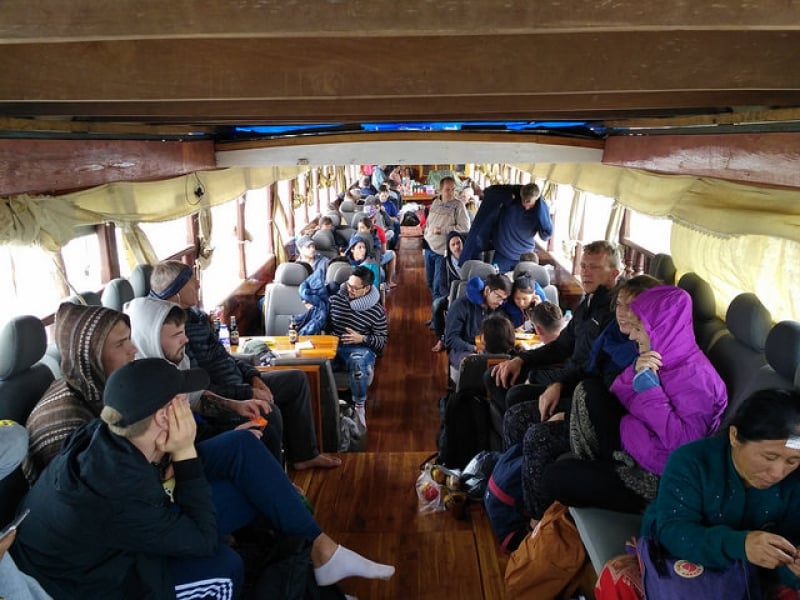
Inside the cabin of the slow boat from Huay Xai to Luang Prabang. It’s reasonably comfortable and popular among tourists.
Do you know that boat trips could be another way to get around as well? This is especially so in countries like Laos, where locals heavily depend on waterways because land journeys are too long and treacherous due to rough terrain. The most popular route is to take the slow boat from Huay Xai (opposite Chiang Khong in Thailand) to Luang Prabang on the Mekong River.
Witnessing wildlife and the local settlements along the sparsely-populated banks of Mekong River was something I’ve never experienced. Travelling by slow boat made me appreciate the slow, simple pace of life that city dwellers rarely enjoy. The leisurely cruise spans a total of two days, with a night of accommodation at Pak Beng, the midpoint of the journey.
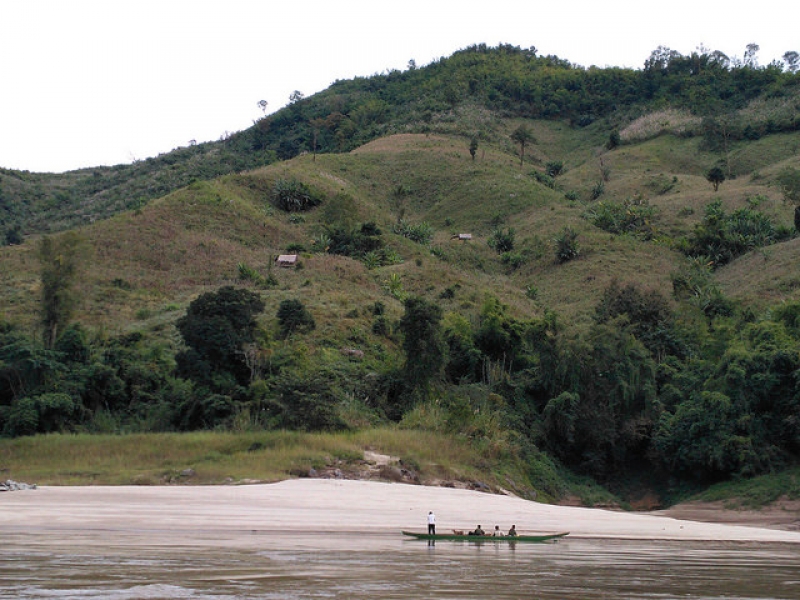
Life along the Mekong River in Laos. The slow boat passes through some of the sparsely-populated areas in this landlocked nation.
Some may think that two days of boat journey is too long and would rather save time by taking the bus. But if given the choice, I’d still choose the slow boat hands down. When I think about reckless bus drivers speeding down dangerous roads and all sorts of horrible consequences that could come after…let’s just say that I’d rather sail down the river and enjoy the calmness and have a peace of mind no matter how long the journey may take.
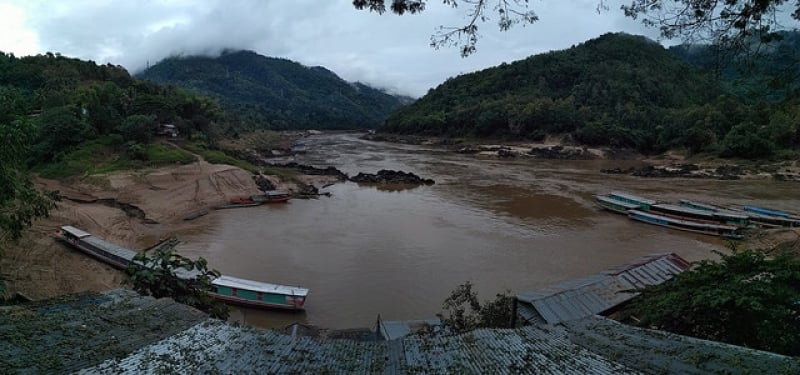
Untouched wilderness of the mighty Mekong River in a distance.
It’s most advisable to travel light (i.e. backpack or carry-on size luggage) since there usually isn’t any proper berth for you to board the boat with ease. En route to a small village near the northern Laos-Vietnam border, I had to disembark a rather flimsy slow boat and climb up a steep slope to a tuk tuk transfer service. Not the best way to travel when you have lug a huge, heavy luggage up the river bank like this:
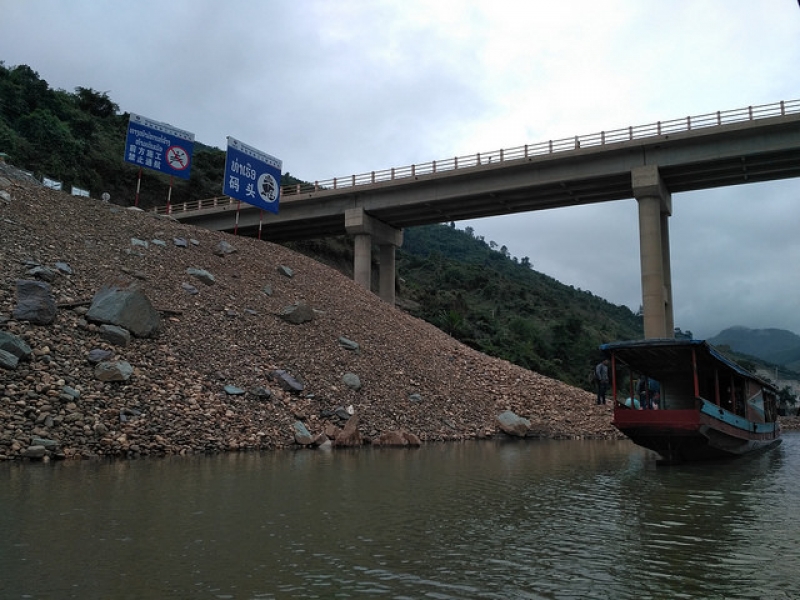
The definition of pier in Laos. On the Nam Ou River, my trip was unexpectedly interrupted by a dam construction. To continue my boat journey, I had to hike all the way up and make a tuk tuk transfer to the other side of the dam. Damn.
Earplugs or noise-cancelling earpieces are essential whenever you go by boat. You may be assigned to sit next to the continuously roaring engine. That could brutally damage your eardrums if you don’t have any form of hearing protection for the next several hours!
It’s the journey that matters – You’ll see much more when travelling on surface!
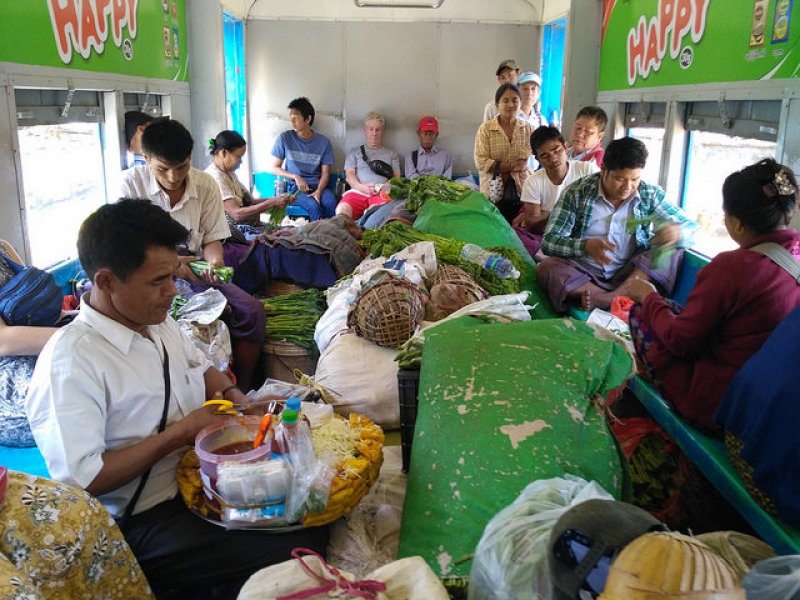
A mobile marketplace on the Myanmar railways. Such a genius!
Looking back, some of my best moments in the region are actually the journeys themselves rather than the destinations. I discovered some very interesting aspects of local life that I never imagined. One of them was on the Yangon Circular Railway serving the suburbs of Myanmar. Locals literally transform the train carriages into a mobile marketplace, demonstrating the entrepreneur spirit in all kinds of settings just to earn a little bit more for themselves. I can’t even imagine this happening back home in Singapore!
That’s why I very much prefer travelling by land and water where I can experience real, authentic journeys, rather than taking an uneventful flight that completely diminishes such experiences. So, next time when you travel around Southeast Asia, try travelling by land and water instead of hopping on a flight! You’ll really see and learn so much more about local life. Eventually, you’ll also realise how fortunate we are to have such functional and efficient transportation systems back home.




